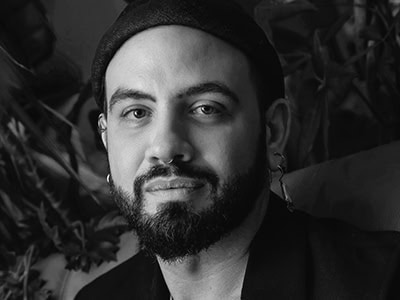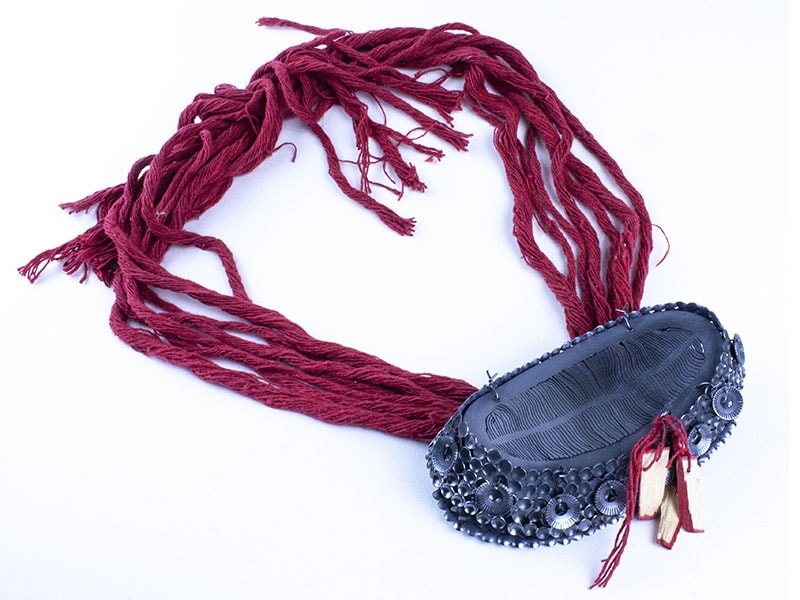
Also in this series:
- Indigenous &: Not Always Looking West (with Brian Fleetwood)
- Indigenous &: Having Roots to Grow in New Directions (with Elias Not Afraid)
- Indigenous &: Tradition Meets Technology (with Pat Pruitt)
Teresa Faris raises questions about being Indigenous but not from the land they are standing on. They open up about what it is like to make with the diagnosis of incurable sarcoid, after originally being given four months to live in 2006. Ideas of displacement, anxiety, and connection are raised, as is the value of finding meditative process in a making practice.

matt lambert: As this is a series with the intention of celebrating Indigenous artists, what part of your background would you like to share?
Teresa Faris: I am a Sámi descendant (maternal and paternal) living on Turtle Island (North America), based in Teejop (Madison), Meskousing (Wisconsin). I was raised within both traditional and assimilated cultures. Because of diaspora and the complexities of having indigenous ancestors who fled to “America” to have a “better life” on stolen indigenous land, I find myself wanting to both scream with pride of reclamation and hide in shame. Art has been a meaningful way for me to feel a sense of belonging and connection.

What specific processes or aesthetics do you use that are specific to your culture?
Teresa Faris: I am currently using the silver dishes as a nod to the traditional Risku (traditional Sámi brooch). I am also working with pewter embroidery for objects that will be made public. While growing up, I was taught to sew, weave, carve, cane, knit, quilt, reclaim, fix, grow, etc. If we needed something, we made it, grew it, or found it. I know that this way of living has worked its way into my approach to making objects/art, but I also have an acute understanding of what is off-limits to me.

Where/how did you learn the processes you use in your work?
Teresa Faris: My parents, grandparents, great-grandparents, and Eurocentric University.
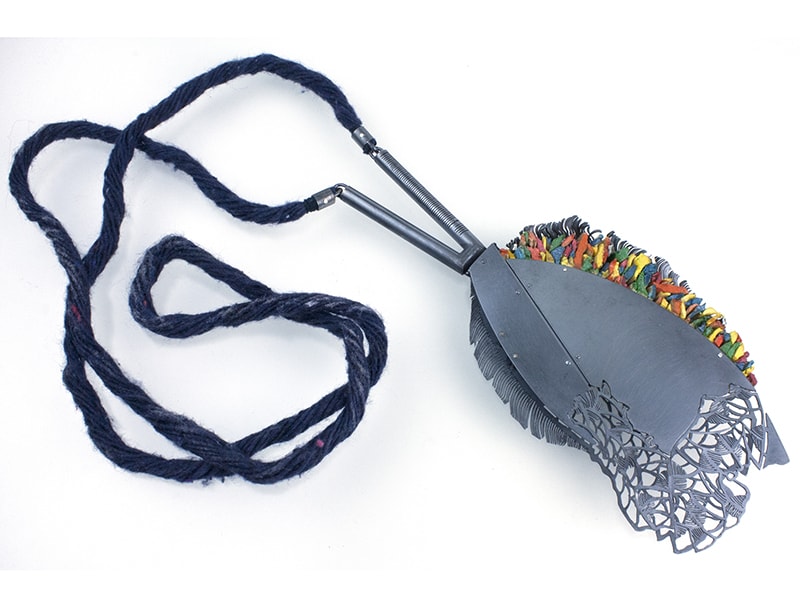
We’ve talked previously about introducing Indigenous ways of thinking and Indigenous aesthetics into the classroom/studio. As a professor and the area head of jewelry/metalsmithing at the University of Wisconsin-Whitewater, what are some ways you go about doing this?
Teresa Faris: When introducing students to metal work and jewelry, I start by talking about and showing contemporary and historical indigenous work alongside Eurocentric work. When teaching technique and vocabulary, I give examples of indigenous words along with the Euro word used for the same technique. I frequently bring indigenous visiting artists to campus to lead technical workshops and I have led student travel programs to New Mexico to attend Southwestern Association for Indian Arts, attend workshops, and visit Native artists’ studios. I also inherently teach from my personal perspective and spend much time talking about water, land, mining, and resources. Students are expected to defend material choice and conceptual origin. I find that the most challenging thing to “teach” to non-BIPOC students is the idea that not all things in the world exist for their use or appropriation/exploitation.
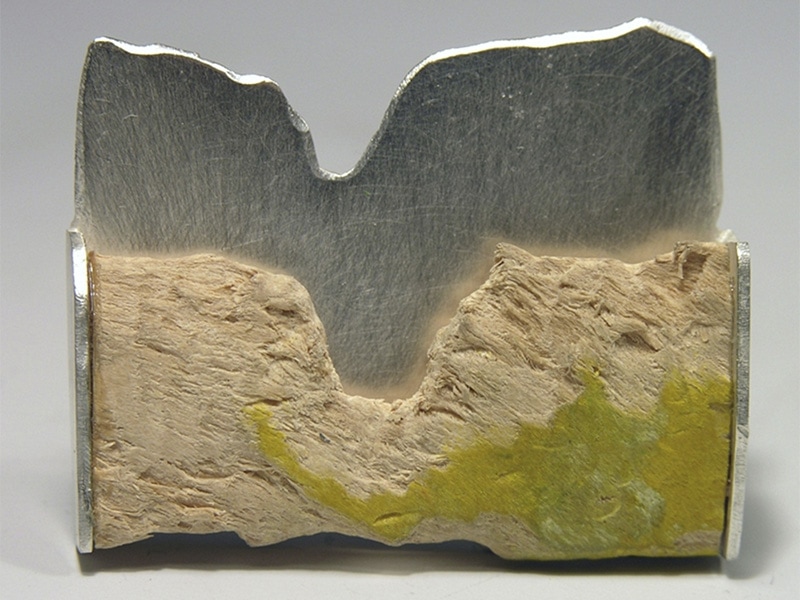
I come from a long line of storytellers and so I relate the stories I was told—that each tool and technique comes with elaborate stories. My deeply rooted beliefs in animism are often a shock to students when I reject and interrogate the intention and use of someone’s body as a merely aesthetic element in art. We have long discussions about authority and connectedness. Students are asked to defend why their work is worthy of natural resources and what their understanding is of the ecological effects of those choices. Students are continuously asked why they believe they have permission to take all that they want to work with. I believe that language matters; when students hear, for the first time, a person say “they, he, she” instead if “it” when speaking about a nonhuman, the way I do, they often smirk, roll their eyes or laugh—but by the end of the semester I am able to see a small shift in the omnipresent and misguided beliefs of dominion.
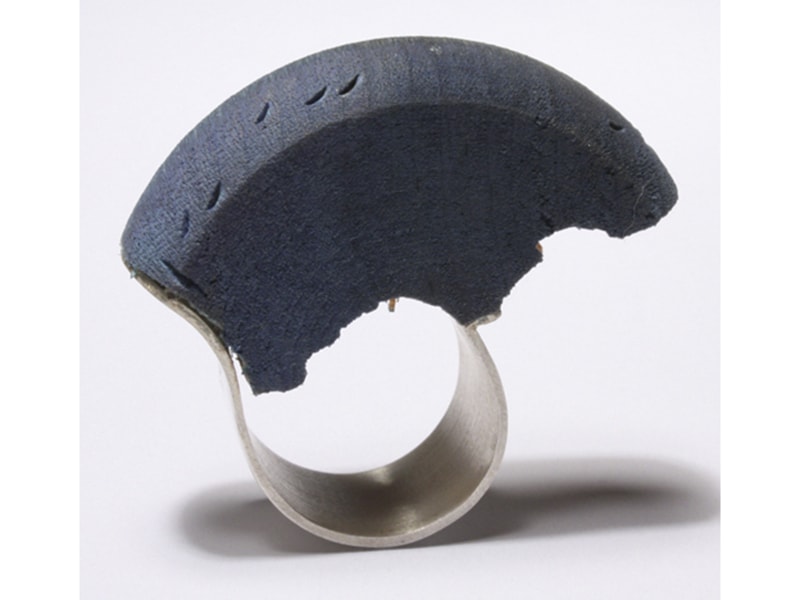
You have an ongoing collaboration with a bird. How did this start?
Teresa Faris: Six months passed from the moment I was admitted to the hospital to when I was diagnosed. Because I had a “mysterious” illness that appeared to be lymphoma, leukemia, or sarcoid, they needed to both identify and rule out possibilities. Charmin (my rescued umbrella cockatoo) was identified as a possible cause for concern. U-toos are very dusty when they’re young, so I was told that we couldn’t be in contact while the tests were being performed. She was in her cage and I was lying on the couch watching her pacify her anxiety over our new separation. I realized very quickly that Charmin’s obsessive chewing of wood was an attempt to ease the anxiety (of our separation and displacement) and was no different than what I was doing in my studio, so I decided to combine the efforts.
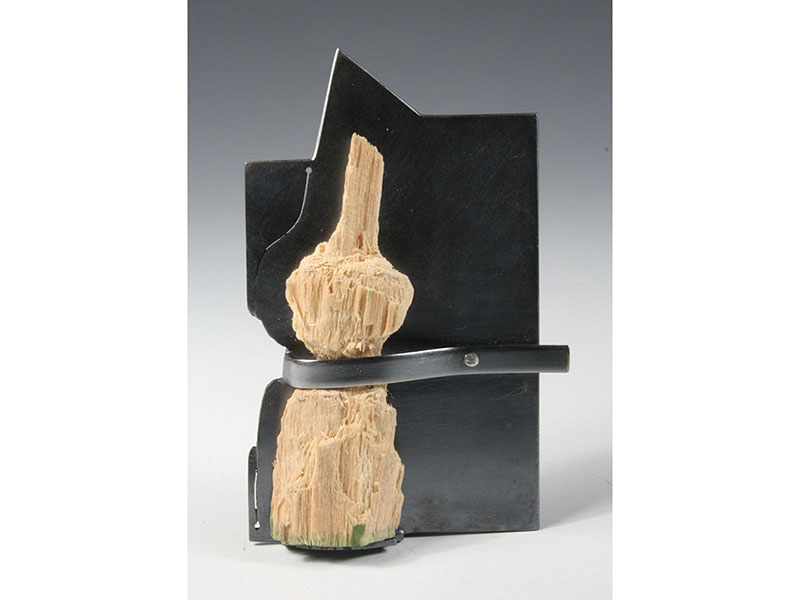
What input or work does Charmin contribute that makes it a collaboration? What does a dialogue with a nonhuman collaborator look like?
Teresa Faris: I have participated in many collaborative efforts with humans that are no different than the way I work with Charmin. Someone gives me an object or remnants of objects to be discarded—my favorite—and I make a piece in response. Charmin gets wood (that I cut into pieces 1 x 3 inches, or natural fallen branches from my yard) that she chews on. This provides a natural way for her to keep her beak trimmed and shaped and also offers a distraction from her unnatural captive and displaced life. Depending on her mood, she chews the wood down to splinters, carves pieces that look like they’ve been turned on a lathe (by spinning them in her beak), or carves small sculptural objects. I either collect the discarded pieces or accept the gifted pieces that she hands to me and then respond to them aesthetically and emotionally/conceptually.
The self-proclaimed superiority defines nature as being separate from humans. In order to pacify this misguided belief many humans have convinced themselves of “dominion.” Humans and animals have been placed in zoos, traded as slaves, objects of possession, power and status and died by the millions in order to feed the endless hunger of supremacy.
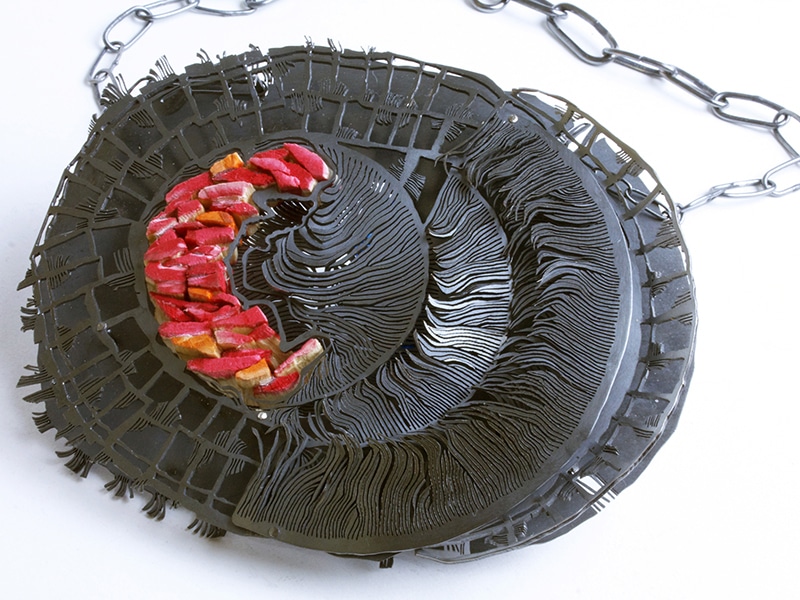
When observing a 28-year-old rescued parrot, who I share my life with, there are many relatable questions raised. I wonder if she longs to find her community. I wonder if the indigenous birds see her as no longer a bird because she is void of original language and rituals, a “culture vulture,” not enough like a bird, or too much like a human.
The consequences for being displaced from what is natural often ends in dis-ease. Through process, form, and the use of discarded materials, this work helps me to reclaim what was taken, guides me through illness and embodies my desire to understand displacement, birthright, and the debts we pay with our body and mind in order to fit in and survive.
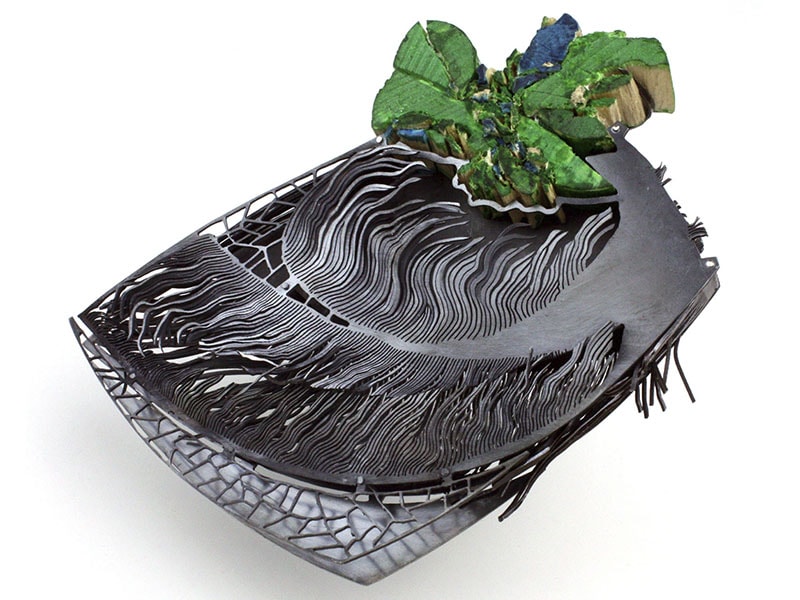
You have been vocal online in regard to sarcoid awareness and your life experience with the disease. How has sarcoid affected your practice?
Teresa Faris: Sarcoid affects every aspect of my life and practice. When I was first sick (in 2006), I was told I had four months to live so the work I made was quick and able to be completed in minutes or hours. During the first three and a half years, I was on a high dose of prednisone and made hundreds of works. The materials used and the scale of the work is dictated by my abilities. The obsessive cutting was my authentic way of dealing with the constant feeling of ants running through my veins. As I began to realize that I was going to live with this incurable systemic illness, I started to use the material as a means to calm my anxieties. I have been using laborious processes since and find meditation in it, improve muscle memory, and challenge my failing vision. I look forward to the next shift. I don’t know that I’ll ever be able to approach anything without the weight of illness pressing down, but I’d love to see what that could look like.

When making work, do you have a specific audience or venue in mind?
Teresa Faris: Everyone/everywhere and no one/nowhere.
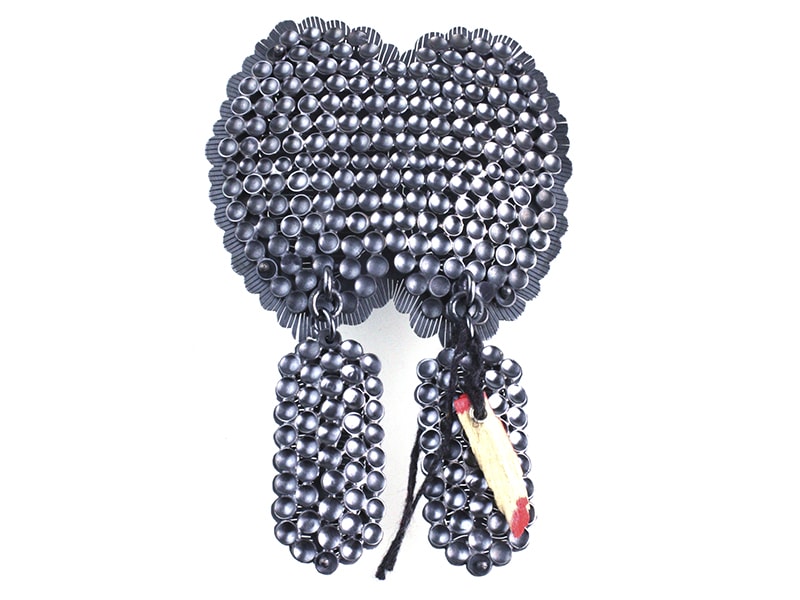
What are some thoughts for the future? Is there a place you’d like to show, or a project you’d like to make happen?
Teresa Faris: Resistance can be, independently or simultaneously, quiet and loud. Lately, I oscillate between wanting to manifest a big attention-worthy art exhibition or return to my roots and focus on making clothing and other domestic necessities.

What is something you wish people would ask more about in your work?
Teresa Faris: I always think that it’s obvious that my work speaks about displacement, being discarded, and working through animal, women’s, indigenous, and disability issues. But when I am excluded from related thematic shows or told “you should work bigger,” I think that they’re not hearing me, understanding the issues, or I’m not being clear. Throughout the years, many people have made false (and interesting) assumptions about my artist statement/beliefs and me. I have learned that when people (after reading my statement or hearing me speak) smirk and say, “you must dabble in Buddhism,” that it is their own filter and limitations that are muting my words. It is always in those moments that I have a profound understanding of the widely used proclamation “We Are Still Here.”
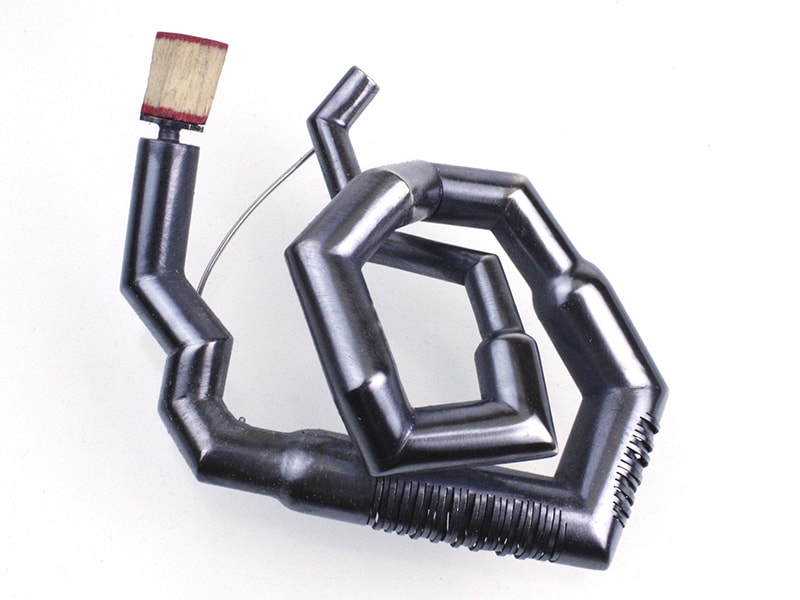
Where can readers see more work or follow what you are doing?
Teresa Faris: Insta: teresafrankfaris. Facebook: Teresa F Faris Jewelry.
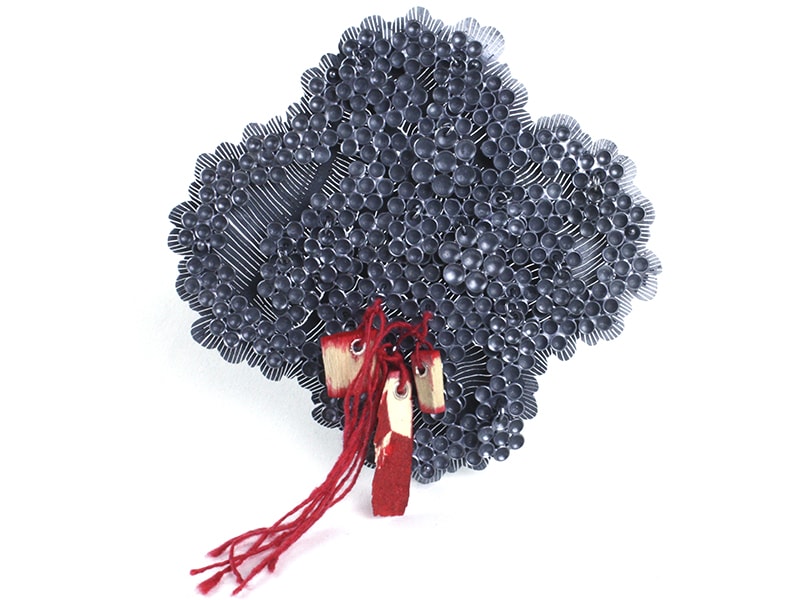
Do you have any recommended artists or other resources to look at?
Teresa Faris: Some of the artist who inspire me for their authentic bravery, advocacy, and resistance are: Sébastien Carré, Laun Njunnás, Anders Sunna, Maret Anne Sara, Eric Paul Riege, Elle Valkeapää, Mariah Upfield, Juan Riusech, and Elias Jade Not Afraid.
Editor’s note: This interview is part of matt lambert’s Indigenous & series. Read matt’s interview with Brian Fleetwood—also part of this series—here.
